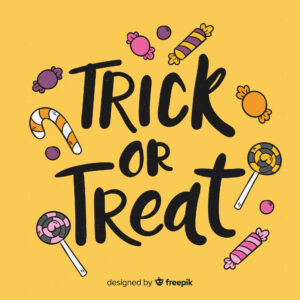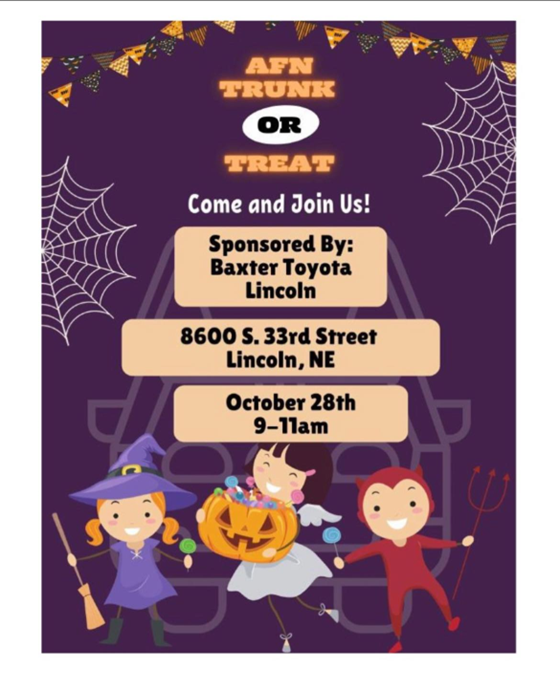
While Halloween is a fun and exciting time for kids, it can also come with intense input. Noise, lights, unfamiliar surroundings and events, and other factors may all cause a child distress while trick-or-treating, leading to a higher chance of meltdowns for children with Autism Spectrum Disorder (ASD) and related conditions.
However, there are ways to make trick-or-treating sensory-friendly and enjoyable for your family. Here are seven tips for a more pleasant trick-or-treating in 2023 that’ll help you make this Halloween your best yet.
7 Tips for Sensory-Friendly Trick-or-Treating
During the holiday season, planning ahead is key when you have kids with sensory issues, mental, behavioral, neurodevelopmental concerns like ASD, anxiety, or ADHD. That way, you can reduce discomfort, find suitable activities, and make a plan for potential pitfalls or challenges. Use these guide and tips to make your Halloween a successful one.
1. Test Halloween Costumes for Comfort in Advance.
When your child chooses a costume, make sure to consider and address possible issues related to the costume ahead of time. Have your child sit, stand, and walk around in the costume.
Avoid any known items that may cause distress. This will differ for every child but may include things like certain fabrics, masks, makeup, or headbands.
Get creative and consider DIYing some parts of the costume if needed. If your child isn’t able to wear a costume at this time, that is also okay.
2. Talk About What to Expect – and Practice!
Leading up to Halloween night or the night of a trick-or-treating event, talk about what to expect with your child. Discuss where you will be going (consider taking your child by the location in advance), rules or expectations, and what it will be like when they’re there.
If decorations aren’t up at the location yet, explain that it will be decorated, that there will be other families there, and any other details you might want to cover. If your child has not participated in Halloween before, you might start by explaining what Halloween is and talking about Halloween traditions overall.
Then, practice ringing the doorbell or knocking on the door and saying “trick-or-treat” together. You can use your own front door and doorbell. This is a great time for your child to practice wearing their costume.
If the child is nonverbal or sometimes has trouble with verbal communication, make a note card to show others while trick-or-treating. The card can include some brief information about your child and state that they might be unable to say things like “trick-or-treat” or “thank you.” Carrying a note card can help your child avoid misunderstandings.
3. Choose the Trick-or-Treating Events.
If your child has sensory issues, you likely already know to skip houses and events (like haunted houses) with decorations that are loud, bright, or come with unexpected “jump scares.” It can be ideal to stick to neighborhoods and houses you know are suitable. For example, personal family members and friends’ houses. There are also appropriate trick-or-treating events that can help.
Sensory-friendly trick-or-treating events are typically geared toward kids with ASD and related conditions. Built with special needs in mind, these events are an excellent way for your child and family to have a memorable and successful Halloween.
Behaven Kids is proud to participate in the Autism Family Network (AFN) ‘s Trunk or Treat event on October 28th from 9-11 AM at 8600 S. 33rd St. in Lincoln, NE. This is a event where kids get to participate in something exciting with a far lower chance of being over stimulated.

At these friendly events, the staff, family, and other kids around will all understand your family and any concerns that might arise throughout the event. If you and your child need to step aside, there will be easily accessible ways to do so, which isn’t always the case when trick-or-treating in neighborhoods.
The individuals handing out treats will understand if your child is nonverbal or has a tough time at the event for any reason. Overall, it’s a safe space with little potential for distress and an increased sense of understanding.
4. Focus on Rest and Relaxation.
For kids and adults alike, one thing is true. We are all in a better mood and less prone to outbursts if we are well rested, have a low-stress level, and have eaten regularly throughout the day. One tried and true tip for getting through the holidays is to ensure that your child is well-rested and comfortable before events like trick-or-treating.
Just like you’ll set your child up for success by making sure their Halloween costume is comfortable and that they know how to participate in trick-or-treating appropriately, ensure needs such as hunger and sleep are met.
Alone time, rest, and reminders about what time of day the event is, when you will leave, and so on can all be beneficial during the hours before the event. Try to make the day a gentle and calm one if and when possible.
5. Make a Game Plan
Sometimes, things happen, even if you plan ahead of time. Especially when it comes to issues, some things can’t be prevented or predicted. To combat this, make a game plan ahead of time to use in the case that your child does experience any type of overload, or any other challenges throughout the course of the day or night trick-or-treating.
Having an exit plan (another reason to take a trip to the trick-or-treating site first) and bringing items known to comfort your child when distressed can be helpful. Similarly, thinking of a realistic time limit, such as trick-or-treating or staying at an event for one hour only, can help your child avoid overload, overwhelm, or fatigue.
6. Consider Alternative Activities if Needed
As exciting as Halloween is for many children, know that it’s okay if your child isn’t ready to trick-or-treat, too. For some kids, trick-or-treating might be too much at this time. They may prefer other Halloween activities, like handing candy out to other kids at home, making crafts, or watching Halloween movies.
7. Get Support for Your Family if Needed
Behaven Kids offers therapy, family support and other services, including ABA and autism services, for kids with behavioral or mental health concerns of all levels. If your family is interested in our services, please call Behaven Kids at (402) 926-4373. Our staff is here to help and answer any questions you might have about our services. You can also go over our admissions process, or schedule a tour for free.

